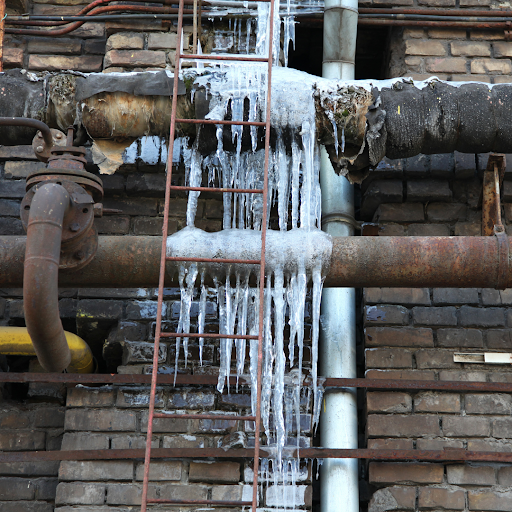Avoiding Frozen Pipes in Winter: Critical Tips
Avoiding Frozen Pipes in Winter: Critical Tips
Blog Article
Just how do you feel on the subject of Winter Plumbing Precautions: Preventing Frozen Pipes?

Cold weather can damage your pipes, especially by freezing pipelines. Right here's how to stop it from happening and what to do if it does.
Introduction
As temperatures drop, the threat of frozen pipelines boosts, possibly causing pricey repair work and water damage. Understanding how to avoid frozen pipes is crucial for home owners in cold environments.
Recognizing Frozen Pipes
What causes pipelines to ice up?
Pipes freeze when subjected to temperature levels below 32 ° F (0 ° C) for prolonged durations. As water inside the pipelines ices up, it increases, taxing the pipe walls and potentially creating them to burst.
Risks and damages
Icy pipelines can bring about water disturbances, property damage, and pricey repair work. Ruptured pipelines can flood homes and cause considerable architectural damages.
Signs of Frozen Pipes
Recognizing icy pipes early can avoid them from breaking.
How to recognize icy pipes
Seek reduced water flow from taps, unusual odors or sounds from pipelines, and noticeable frost on subjected pipes.
Prevention Tips
Protecting at risk pipes
Wrap pipelines in insulation sleeves or make use of warm tape to safeguard them from freezing temperature levels. Concentrate on pipelines in unheated or external locations of the home.
Home heating strategies
Maintain interior rooms appropriately heated up, especially areas with pipes. Open up cabinet doors to allow warm air to flow around pipelines under sinks.
Shielding Outdoor Plumbing
Garden hose pipes and exterior faucets
Detach and drain pipes yard tubes before wintertime. Mount frost-proof spigots or cover outdoor faucets with protected caps.
What to Do If Your Pipelines Freeze
Immediate activities to take
If you presume icy pipes, keep faucets open up to alleviate stress as the ice melts. Use a hairdryer or towels taken in warm water to thaw pipes slowly.
Long-Term Solutions
Structural changes
Take into consideration rerouting pipes away from outside wall surfaces or unheated locations. Include extra insulation to attic rooms, basements, and crawl spaces.
Updating insulation
Purchase high-grade insulation for pipelines, attic rooms, and wall surfaces. Proper insulation helps preserve constant temperature levels and reduces the risk of frozen pipelines.
Verdict
Avoiding icy pipelines calls for proactive steps and fast actions. By recognizing the reasons, indicators, and safety nets, house owners can protect their pipes during cold weather.
5 Ways to Prevent Frozen Pipes
Drain Outdoor Faucets and Disconnect Hoses
First, close the shut-off valve that controls the flow of water in the pipe to your outdoor faucet. Then, head outside to disconnect and drain your hose and open the outdoor faucet to allow the water to completely drain out of the line. Turn off the faucet when done. Finally, head back to the shut-off valve and drain the remaining water inside the pipe into a bucket or container. Additionally, if you have a home irrigation system, you should consider hiring an expert to clear the system of water each year.
Insulate Pipes
One of the best and most cost-effective methods for preventing frozen water pipes is to wrap your pipes with insulation. This is especially important for areas in your home that aren’t exposed to heat, such as an attic. We suggest using foam sleeves, which can typically be found at your local hardware store.
Keep Heat Running at 65
Your pipes are located inside your walls, and the temperature there is much colder than the rest of the house. To prevent your pipes from freezing, The Insurance Information Institute suggests that you keep your home heated to at least 65 degrees, even when traveling. You may want to invest in smart devices that can keep an eye on the temperature in your home while you’re away.
Leave Water Dripping
Moving water — even a small trickle — can prevent ice from forming inside your pipes. When freezing temps are imminent, start a drip of water from all faucets that serve exposed pipes. Leaving a few faucets running will also help relieve pressure inside the pipes and help prevent a rupture if the water inside freezes.
Open Cupboard Doors
Warm your kitchen and bathroom pipes by opening cupboards and vanities. You should also leave your interior doors ajar to help warm air circulate evenly throughout your home.
.jpg)
Do you enjoy more info about Prevent Frozen Pipes ? Post a remark down below. We will be happy to hear your reactions about this content. We are looking forward that you come back again soon. Do you know another individual who is serious about the topic? Feel free to share it. Many thanks for going through it.
Call Today Report this page